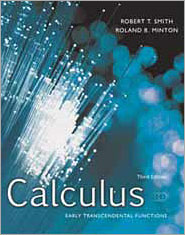 <a onClick="window.open('/olcweb/cgi/pluginpop.cgi?it=jpg::::/sites/dl/free/0073451342/295036/ch15.jpg','popWin', 'width=NaN,height=NaN,resizable,scrollbars');" href="#"><img valign="absmiddle" height="16" width="16" border="0" src="/olcweb/styles/shared/linkicons/image.gif"> (21.0K)</a> <a onClick="window.open('/olcweb/cgi/pluginpop.cgi?it=jpg::::/sites/dl/free/0073451342/295036/ch15.jpg','popWin', 'width=NaN,height=NaN,resizable,scrollbars');" href="#"><img valign="absmiddle" height="16" width="16" border="0" src="/olcweb/styles/shared/linkicons/image.gif"> (21.0K)</a> | In a classic television commercial from years ago, the great jazz vocalist Ella Fitzgerald broke a wineglass by singing a particular high-pitched note. The phenomenon that makes this possible is called resonance, which is one of the topics in this chapter. Resonance results from the fact that the crystalline structures of certain solids have natural frequencies of vibration. An external force of the same frequency will "resonate" with the object and create a huge increase in energy. For instance, if the frequency of a musical note matches the natural vibration of a crystal wineglass, the glass will vibrate with increasing amplitude until it shatters.
Resonance causes such a dramatic increase in energy that engineers pay special attention to its presence. Buildings are designed to eliminate the chance of destructive resonance. Electronic devices are built to limit some forms of resonance (for example, vibrations in a CD player) and utilize others (for example, stochastic resonance to amplify the desirable portions of a signal).
One commonly known instance of resonance is that caused by soldiers marching in step across a footbridge. Should the frequency of their steps match the natural frequency of the bridge, the resulting resonance can cause the bridge to start moving violently up and down. To avoid this, soldiers are instructed to march out of step when crossing a bridge.
A related incident is the Tacoma Narrows Bridge disaster of 1940. You have likely seen video clips of this large suspension bridge twisting and undulating more and more until it finally tears itself apart. This disaster was initially thought to be the result of resonance, but the cause has come under renewed scrutiny in recent years. While engineers are still not in complete agreement as to its cause, it has been shown that the bridge was not a victim of resonance, but failed due to some related design flaw. Some of the stability issues that had a role in this disaster will be explored in this chapter.
In this chapter, we extend our study of differential equations to those of second order. We develop the basic theory and explore a small number of important applications. |





